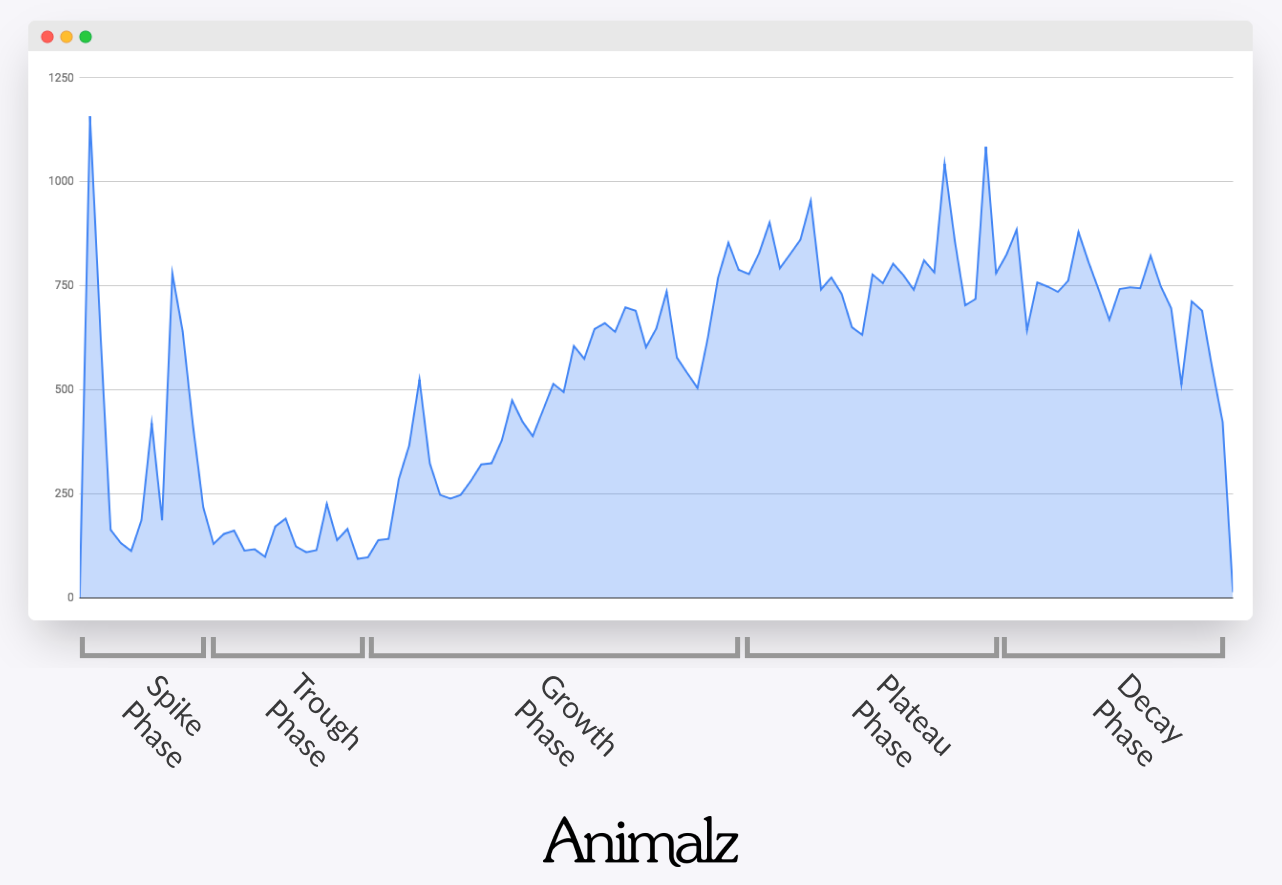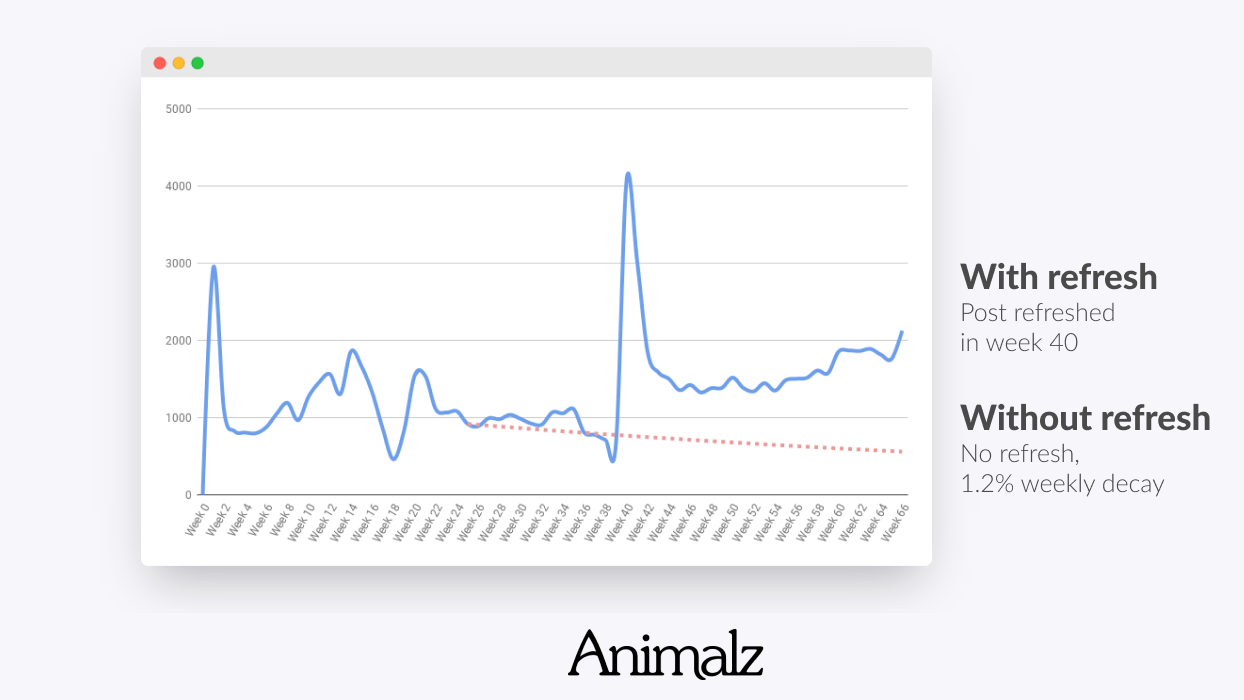Why, When, and How to Refresh Old Content

Readers judge content like they would a loaf of bread at the grocery store—the fresher, the better. The same goes for search engines and their algorithms.
So, what does that mean for your content strategy? Make sure you’re consistently auditing your content library and refreshing older content to stay relevant. Refreshing content cuts out the work of constantly creating new pieces from scratch and ensures that you’re getting optimal ROI from the effort you put into your blog.
- Why refresh content?
- When does refreshing content make sense?
- How to refresh and improve older content
Why refresh content?
Content refreshing is a key component of content repurposing. It’s a specific case of updating a piece of content with current statistics, dates, and links, adding or subtracting context, and shifting target keywords as needed.
Refreshing content is essential to making the most of your content archive. The top priorities for future refreshes should be ensuring comprehensiveness and boosting relevance to readers and search engines. Content refreshing can also be referred to as “content revamping.”
The lifecycle of a typical post usually looks something like this: traffic for a new piece spikes after first being published, then it drops off, entering a trough phase shortly after, followed by steady growth to a plateau when performance evens out.
You’ll want to keep an eye on the plateau because once traffic takes a downturn, you’ve entered a phase called content decay. The goal is to refresh content before decay sets in and before search engines begin depreciating the authority of the piece.

(Source: Animalz)
This case study from content marketing agency Animalz over the course of 66 weeks shows the difference refreshing a piece within the first year of its publishing can make.

(Source: Animalz)
Aside from the defensive reason of refreshing content to combat decay, your goal should be to improve performance and bring more value to your readers.
Content refreshes can range from a light touchup to an entire rewrite. It’s on you, the content manager, to assess a given piece and decide what needs freshening up.
What Google wants to see in a content refresh, on the other hand, is a different story. Here’s what we know:
- Google prefers individual pages to be regularly updated.
- Google prefers freshness for the whole site, like publishing new content.
- “Query deserves freshness” is a ranking factor in search engine results pages that places new content above older content.
- Google prefers up-to-date linking, because external links decay over time as well.
The bottom line is that you can almost always make a case for refreshing a given piece of content. That’s why you need to be strategic in how you prioritize your efforts, refreshing content that will have the greatest impact.
When does refreshing content make sense?
Before you begin refreshing your content, audit your archive to identify “low-hanging fruit” opportunities—posts that are performing well but have room to improve.

Tools like Parse.ly and our Evergreen Report are particularly helpful in auditing your archive based on audience engagement. They’ll help you surface content that has already shown promise and will continue to be valuable for future audiences.
(Source: Parse.ly’s Evergreen Report)
After the audit, choose the posts you want to refresh. We recommend making a spreadsheet to rank pieces by engagement, conversions, or any other KPIs you’re optimizing for. Then start doing refreshes in increments of three to five posts or pages at a time to get the hang of the process.
The top priorities in a content refresh are to improve 1) how a piece delivers keywords to search engines and 2) its value to human users. Here’s how to do that systematically.
How to refresh and improve older content
1. Read and research
Bring an objective eye to the first batch of pieces you’ve chosen to refresh by reading through them in full and contextualizing them in the present day.
Some questions to get you started:
- What should change to better serve today’s users? Think about how you might integrate advancements in Google algorithms, product improvements, or recent industry events to add context since the piece was written or last updated.
- Could this piece be more comprehensive? Does it need to be longer? Add context through research by looking at “related searches” and “people also ask” on Google. You may also want to consider changing formats from the original—from a blog post to an explainer video, for example.
- Could the keyword strategy use a refresh? You may need to shift the original keyword strategy depending on the search intent you find in your research.
- Do statistics, visuals, or links need a refresh as well? Internal and external links in a piece can also decay or break over time, so at the very least, click through each one and update them if needed. The same goes for statistics and visuals—the more up-to-date, the better.
2. Refresh
To guide your refreshing efforts, ask yourself: how can I make this post more helpful for today’s reader? Give it a critical read, restructure it, and modernize it.
3. Republish and promote
A crucial piece of a successful content refresh is updating the publish date to the date of the most recent refresh. Not only will this show up as a more recent date to human searchers, but it also signals to search engines that this piece contains new, up-to-date content. Most content management platforms have an expedited method for doing this (here’s how to do it in WordPress).
As with all content, a promotional strategy for refreshed posts is key to success—getting the word out about your content beyond passively pushing “publish” is essential to circulating the new-and-improved version and bringing in new audiences.
Use Parse.ly’s evergreen content identification functionality to plan for the long term. Optimize as many pieces as you can to become evergreen to preserve the freshness of your content with less maintenance. And don’t forget to read more about making the most of evergreen content in our recently published guide on why your next content marketing win is hiding in your archives, waiting to be repurposed.